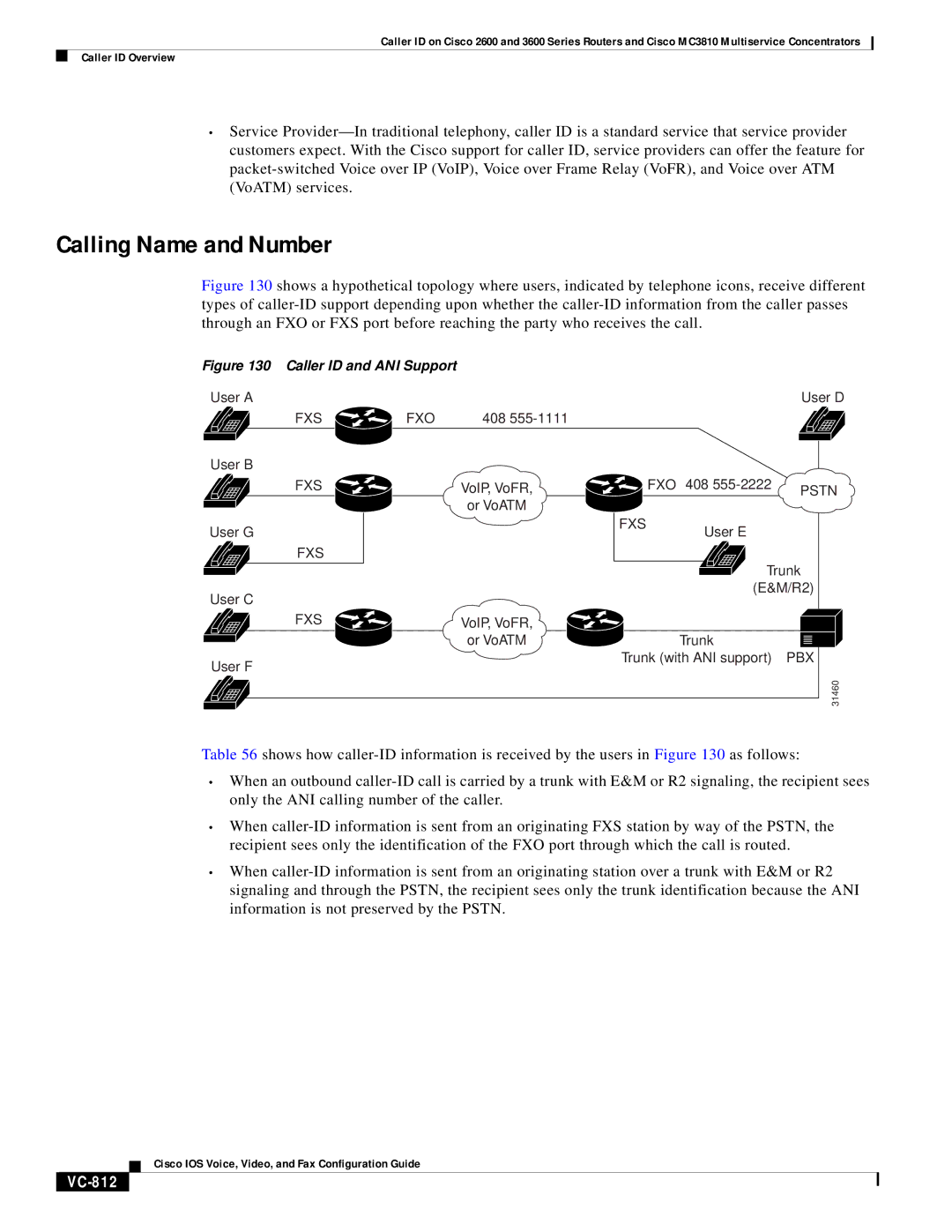
Caller ID on Cisco 2600 and 3600 Series Routers and Cisco MC3810 Multiservice Concentrators
Caller ID Overview
•Service
Calling Name and Number
Figure 130 shows a hypothetical topology where users, indicated by telephone icons, receive different types of caller-ID support depending upon whether the caller-ID information from the caller passes through an FXO or FXS port before reaching the party who receives the call.
Figure 130 Caller ID and ANI Support
User A
FXS
User B
FXS
User G
FXS
User C
|
|
|
| User D |
FXO | 408 |
|
|
|
| VoIP, VoFR, |
| FXO 408 | PSTN |
| or VoATM |
|
|
|
|
| FXS | User E |
|
|
|
|
| |
|
|
| Trunk | |
|
|
| (E&M/R2) | |
FXS | VoIP, VoFR, |
|
| or VoATM | Trunk |
User F |
| Trunk (with ANI support) PBX |
|
| |
|
| 31460 |
Table 56 shows how
•When an outbound
•When
•When
Cisco IOS Voice, Video, and Fax Configuration Guide
